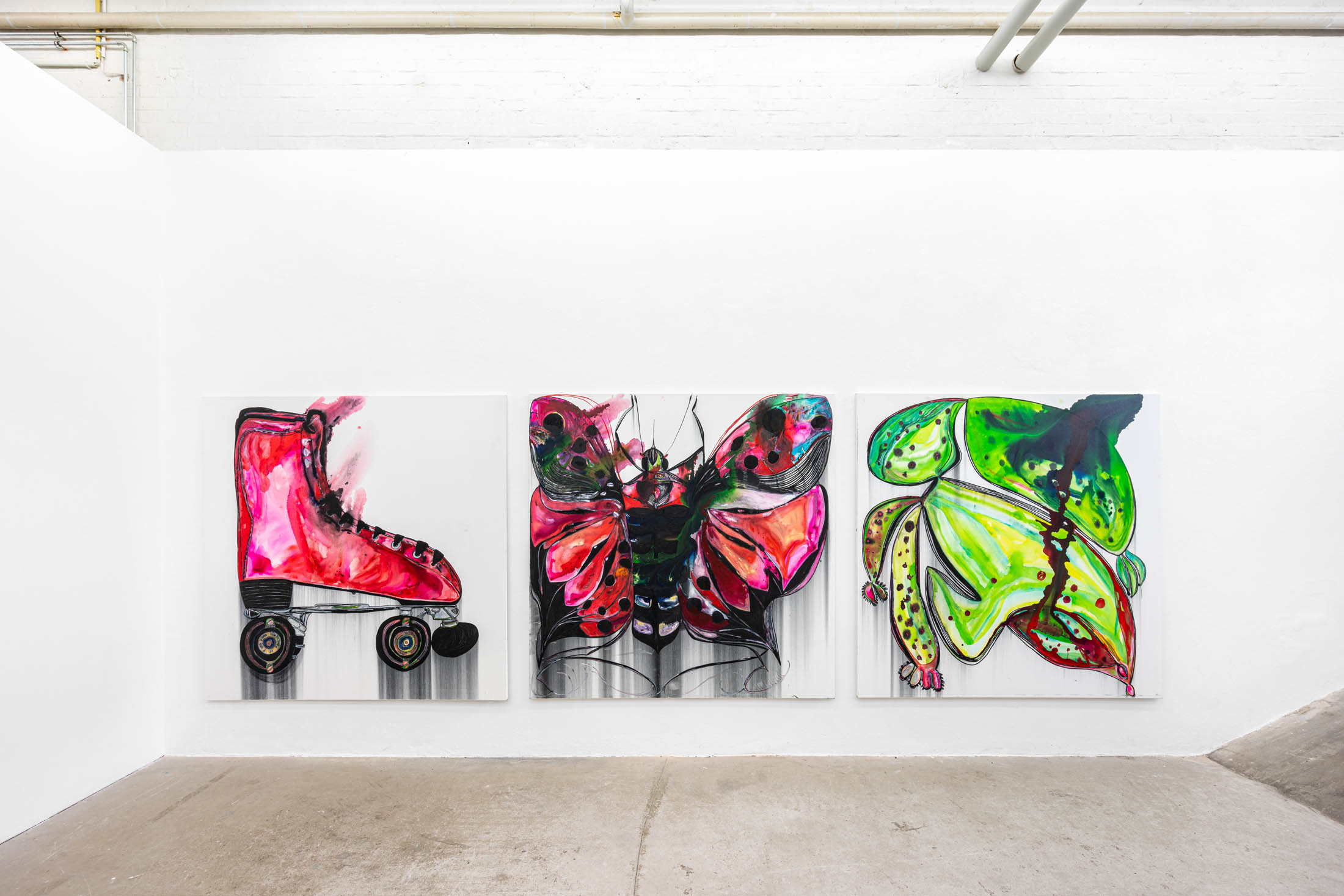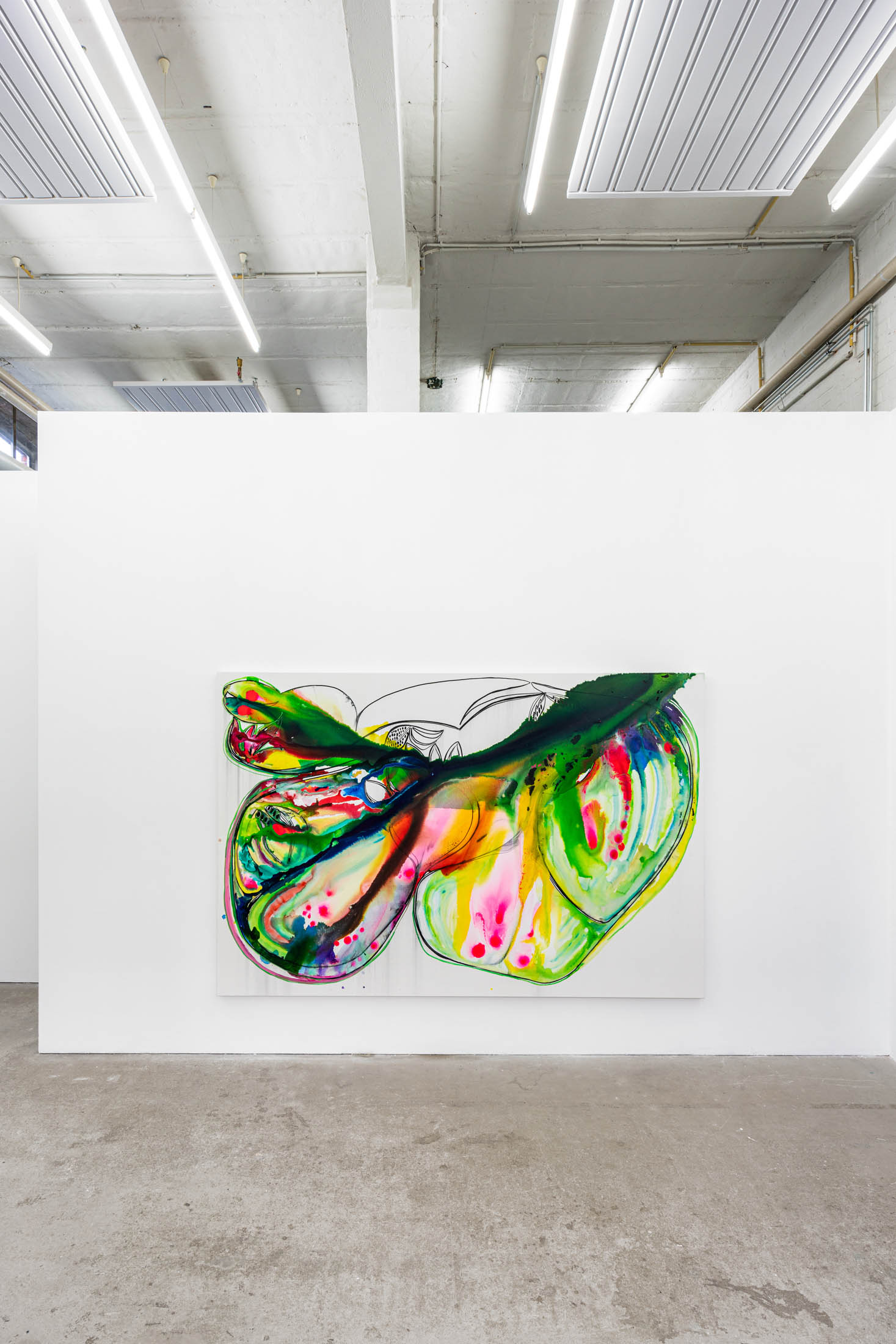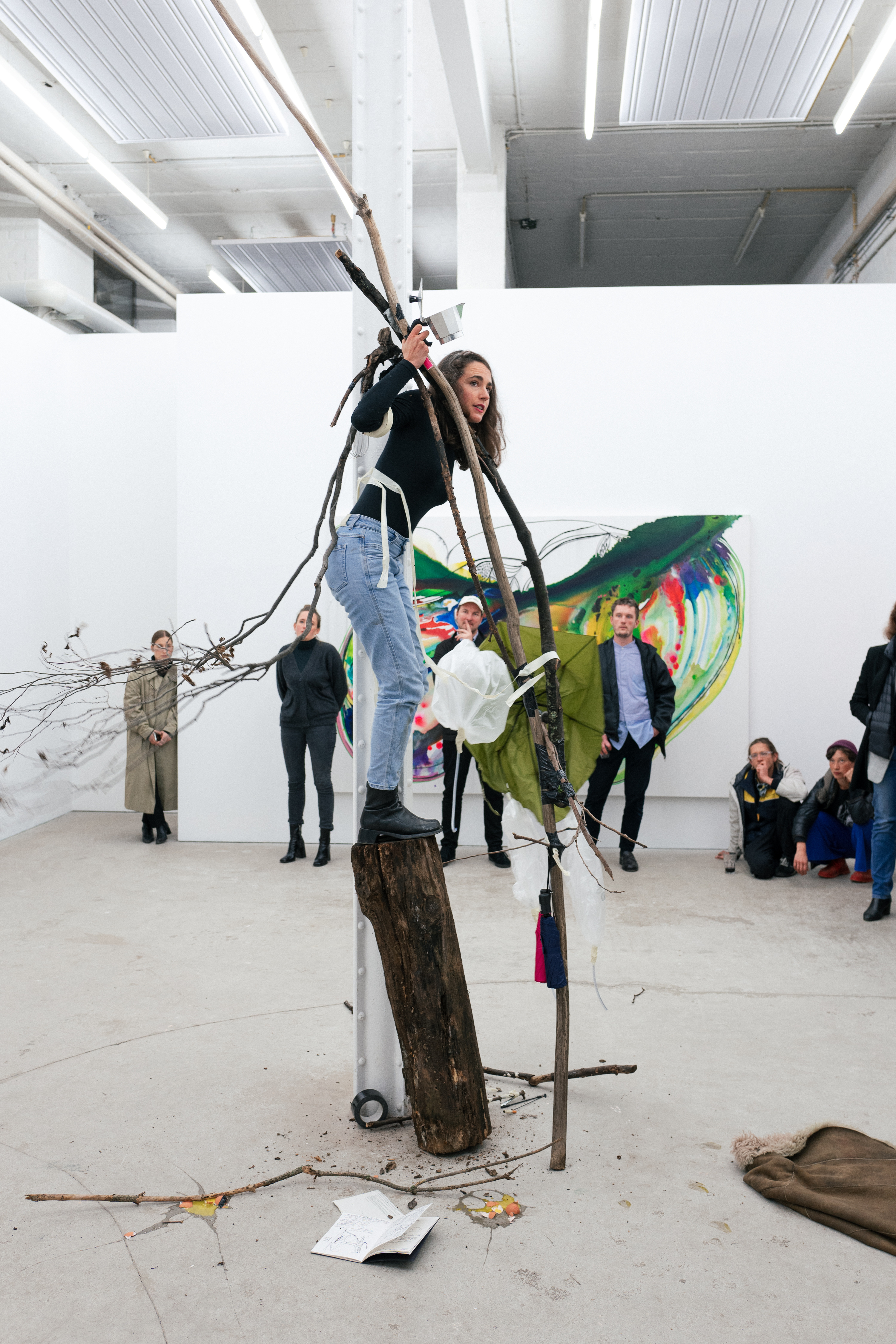
Installation view: Sophie Schmidt, ‘So weit wir auch fahren, so nah wir auch kommen’, November 4, 2022 – February 11, 2023, Galerie Tobias Naehring, Leipzig

Installation view: Sophie Schmidt, ‘So weit wir auch fahren, so nah wir auch kommen’, November 4, 2022 – February 11, 2023, Galerie Tobias Naehring, Leipzig

Installation view: Sophie Schmidt, ‘So weit wir auch fahren, so nah wir auch kommen’, November 4, 2022 – February 11, 2023, Galerie Tobias Naehring, Leipzig

Installation view: Sophie Schmidt, ‘So weit wir auch fahren, so nah wir auch kommen’, November 4, 2022 – February 11, 2023, Galerie Tobias Naehring, Leipzig

Installation view: Sophie Schmidt, ‘So weit wir auch fahren, so nah wir auch kommen’, November 4, 2022 – January 7, 2023, Galerie Tobias Naehring, Leipzig

Installation view: Sophie Schmidt, ‘So weit wir auch fahren, so nah wir auch kommen’, November 4, 2022 – February 11, 2023, Galerie Tobias Naehring, Leipzig

Installation view: Sophie Schmidt, ‘So weit wir auch fahren, so nah wir auch kommen’, November 4, 2022 – February 11, 2023, Galerie Tobias Naehring, Leipzig

Installation view: Sophie Schmidt, ‘So weit wir auch fahren, so nah wir auch kommen’, November 4, 2022 – February 11, 2023, Galerie Tobias Naehring, Leipzig

Installation view: Sophie Schmidt, ‘So weit wir auch fahren, so nah wir auch kommen’, November 4, 2022 – February 11, 2023, Galerie Tobias Naehring, Leipzig

Sophie Schmidt, 'Äste krachen, Beine brechen, Bäume klagen' (Performance), Galerie Tobias Naehring, Leipzig 2022

Sophie Schmidt, 'Äste krachen, Beine brechen, Bäume klagen' (Performance), Galerie Tobias Naehring, Leipzig 2022

Sophie Schmidt, 'Äste krachen, Beine brechen, Bäume klagen' (Performance), Galerie Tobias Naehring, Leipzig 2022
DE
Weltwunder weisen auf das Verb mirari zurück, sich wundern. Aber das Verhältnis oder das Denken, das die Welt heute aufschließt, nimmt seinen Anfang nicht im Verwundern oder Erstaunen, sondern im Erschrecken und sogar im Entsetzen.
Ob Lackschuhe in Europa oder ein Venice Beach Rollschuh in L. A., ob mehr schwarz und weiß
oder mehr glühend rot: Frau oder Mann zieht sich das an, nicht, um nach Hause zu gehen, sondern um draußen zu existieren. Sophie Schmidt füllt das, was Format heißt, nicht weniger und nicht mehr als die Gelbe Macchinetta ihr Studio und der Coyote eine Straße in Pasadena. Große Gemälde und dann wieder Postkarten holen nicht den Blauen Reiter zurück, sie holen umgekehrt ein, dass der Ort der Malerei so wenig festgelegt ist, wie der der Performance, dass offen bleibt, wo der Körper aufhört und die Prothe- se beginnt. Hinzu kommt, dass sich der Weg zu den Dingen in der Galerie als Entfernung erweist. In München waren die Leinwände von Dingen bewohnt, die den Körper kleiden wie eine Jeansjacke und Schuhe, erweitern wie Küchengeräte oder versorgen wie eine Kaffeekanne. Nach dem Aufenthalt in Amerika aber traten Wesen an deren Stelle: ein Kaktus, ein Schmetterling, Bäume und quasi-Wesen wie der mehr als die Münchener Schuhe vital geladene Rollschuh und ein Hut, der gegen Wolkenkratzer schützt wie ein Zelt. Die europäischen Bilder sind kleiner (200 x 150), die amerikanischen größer (200 x 200), die ersten realer und trockener, die zweiten, wenn man so will, dionysischer. Die neue Ausstellung unterscheidet sich nicht nur von der ersten, sie bildet diesen Unterschied in sich ab: die Knieberge von 2020 waren nur mit Kohle erzeugt, 2022 wird diese von Aquarellfarbe ergänzt, aber in einem Maß, das zwischen München und LA ansteigt. Alles entsteht auf Leinwänden, die fertig aufgespannt und grundiert sind. In diesem Bildträger scheint die Grenze dessen, was fremdbestimmt und dessen, was selbstbe- stimmt ist, greifbar zu werden. Oder er erweist sich als Bildschirm, auf dem sich Nietzsches Beginnen, Qualitatives mit dem Dynamometer zu messen, quantitativ, extensiv darstellt. Und sind die Qualitäten nicht nur gegensätzlich als Zeichnung und Aquarell, Linie und Fläche, dringt die Performance oder das Leben wirklich ins Bild, dann wird die Malerei riesig, zum Monstrum, was bei Vergil nicht zuletzt Zei- chen und Wunder bedeutet, oder zur Welt.
Die weiße Leinwand, die fertig zu kaufen ist, wird nicht entleert, sondern gefüllt. Realien zeichnen sich ab, und dass zu den Sachen Wesen treten, zur Kohle auch Farbe, ist zwar nicht mehr nur sachlich, aber doch eine Reihe. So weit lässt sich diese Addition als eine Kunst nach dem Ende ihrer Autono-
mie verstehen. Und Wolfgang Ullrich müsste auch die Expressivität, die alle Formulierungen Sophie Schmidts kennzeichnet und bereits von den Puppen Hans Bellmers und den kinetischen Objekten Rebec- ca Horns abhebt, nicht als Einwand lesen, sondern als Beleg für den Sonderfall, als der sich die Autono- mie der Kunst historisch und aktuell darstellt. Aber lesen wir nicht nach wie vor sogar römische Kunst, die imperial gemeint ist, heteronom, vor allem formal, autonom? Und wenn der Autor als Der letzte Mohikaner erscheint, tritt dann die Welt nicht als ein Monstrum hervor, dieses als Tier, dann als Zeichen und dann wieder als Wunder? Die Kunst nach dem Ende ihrer Autonomie kann damit beginnen, dass das Monströse eintritt, aber in ein Gedächtnis.
So weit wir auch fahren, so nah wir auch kommen: Die Bilder, die Sophie Schmidt unter diesem Titel zeigt, gehen über Formate wie Malerei oder Performance, Europa oder Amerika immer hinaus. Aber sie lassen sich doch auf eine Reihe bringen, die von der Künstlerin selbst bestimmt und so autonom ist. Weil es folgerichtig ist, ist es auch transparent, dass sich die erste Ausstellung bei Tobias Naehring schwarz und weiß darstellt und die zweite auch farbig. Der Horizont liegt nicht fest, sondern die Zeit selbst ist die Zukunft, diese ist auch noch offen, wenn sie zu drohen scheint:
So sind wir von Alhambra dann aufgebrochen in die Wüste, zu den Joshuatrees und in das Tal des Todes, tagelang sind wir durch Sandmeere gefahren, und diese Endlosigkeit war fast schon zu viel, und zu groß war alles.
– Berthold Reiß
EN
Wonders of the world point us back to the verb mirari, to wonder at, or to marvel. But nowadays the relation or thinking that unlocks the world commences not in wonderment or awe, but in fright and even horror.
Whether Patent Leather Shoes in Europe or a Venice Beach Roller Skate in LA, be it more black and white or more glowing red: a woman or a man dons it not to return home, but to exist outside. Sophie Schmidt fills that which is called format no more and no less than the Yellow Macchinetta fills her studio or the Coyote fills a street in Pasadena. It’s not that her large-format paintings and then postcards bring back the Blaue Reiter. On the contrary, they bring to bear the fact that the site of painting is as undeter- mined as the site of performance, that where the body ends and the prosthesis begins remains an open question. What’s more, the things in the gallery are set at a distance. In Munich, the canvases were inha- bited by things that clothe the body, like a jean jacket and shoes, things that expand the body, like kitchen appliances, or that nourish the body, like a coffee pot. After a residency in America, however, beings took the place of things: a cactus, a butterfly, trees, and quasi-beings like the vitally charged (more so than the Munich shoe) roller skate and a hat that protects its wearer from skyscrapers like a tent. The European pictures are smaller (200 x 150) than the American ones (200 x 200), the former are more realistic and drier, the latter, more dionysian, if you will. Not only does the new exhibition distinguish itself from the former pictures, its very composition illustrates this difference: the Knee Mountains from 2020 were made with charcoal only, while in 2022 they are enhanced through watercolor, and to a degree which escalates on the way from Munich to LA. All the pictures emerge on pre-stretched and pre-grounded canvases. On this type of painted surface, the limit between the heteronomous and the self-determined seems to become tangible. Or it turns out to be a screen on which the dawn of Nietzsche’s quality-measu- ring dynamometer is depicted quantitatively, extensively. And thanks to qualities that are more than just opposite as in drawing and watercolor, line and plane, with a performance or a life that truly penetrates into the image, the painting becomes humongous, a monster, which Virgil regards as no less than sign and miracle – or it becomes a world.
The store-bought white canvas is not emptied but rather filled. Realia come into relief, and it’s no longer just an objective affair that objects are joined by beings and black is joined by color, but it’s still
a sequence. As far as it goes, this addition can be understood as an art after the end of its autonomy. Moreover, Wolfgang Ullrich would be hard pressed to read the expressiveness which characterizes all of Sophie Schmidt’s formulations and harkens back to Hans Bellmer’s puppets and Rebecca Horn’s kinetic objects not as demurral, but as evidence of an outlier in which the autonomy of art depicts itself histori- cally and contemporarily. But are we not perhaps even reading Roman art of an intended imperiousness: heteronomous, autonomous, especially in terms of form? And when the author appears as The Last of the Mohicans, then doesn’t the world emerge as a monster, and the monster as animal, then as sign and then once again as miracle? Ullrich’s “art after the end of its autonomy” can begin, now that the monstrous has entered, albeit into a memory.
So weit wir auch fahren, so nah wir auch kommen. We drive so far, we come so close: the pictures that Sophie Schmidt shows under this title always exceed formats like painting or performance, Euro-
pe or America. Yet they can be brought into a sequence which is determined by the artist and thereby autonomous. Since it is sequential, it is also patently clear why the first exhibition at Tobias Naehring is black and white and the second is also in color. The horizon is not set in stone; it’s time itself which is the future, and time is still open, even if it seems threatening:
And so we left the Alhambra and went into the desert, to the Joshua trees and into the valley of death, for days we drove through oceans of sand, and this endlessness was almost too much, and everything was too vast.
– Berthold Reiß, Translation: William Locke Wheeler